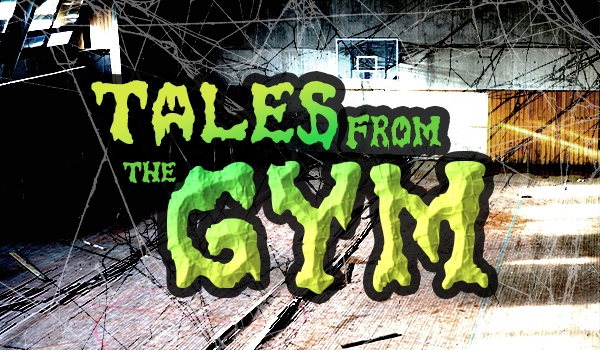
Sport Floor Horror Stories
The scariest thing about flooring installation is the unknown. Are you ready to face your sport floor fears?
This is your last chance. Stop reading now and stay blissfully unaware of what might be hiding beneath your feet, but be warned. If horror movies have taught us anything, it’s this: The murderous creature lurking in the woods won’t leave you alone just because you don’t know it’s there.
In sports-related construction, there are no killer monsters on the loose, but there are some hidden horrors waiting to ruin your carefully designed facility. The best way to avoid them is being aware of them and the damage they can cause. Are you brave enough to face your worst gym flooring nightmares?
Nightmare on Maple Court
It was a dark and stormy night. In fact, it had been raining for days with intermittent power outages. When the clouds finally rolled away, a head basketball coach got his first look at the school gym in a week. He was in shock. The floor looked more like a skate park than a basketball court. Hardwood waves with crests and troughs replacing the flat surface that his players used to run drills on before days before. Given the state of the gym, basketball practice would have to be canceled…indefinitely.
This disaster wasn’t caused by an earthquake, a flood, or even poltergeist. It was humidity. Humidity can be a maple basketball court’s worst enemy. Since wood is a porous material that absorbs moisture from the air, it expands and contracts in response to relative humidity. This nightmare was a result of a dramatic increase in humidity and the shutdown HVAC system. The wooden planks of the basketball court expanded, pushing one another upward the same way plate tectonics form mountain ranges over eons.
Could this have been prevented? Possibly. In the design process, there are ways to mitigate a disaster like this before it occurs. For example, many flooring manufacturers have specific systems designed to ventilate the space underneath hardwood courts. These systems dissipate moisture to lessen its impact on the wood. But, the most effective way to combat humidity involves other aspects of the building. Dehumidifiers can be employed to regulate humidity. Expansion joints around the court should be unobstructed. Even the grading and drainage outside can affect the humidity inside.
Bubble, Bubble, Toil, and Trouble
The elementary school children think it’s funny. The PE teacher and maintenance staff do not. Not long after the new resilient gym floor was installed, mysterious bubbles began to appear—a few at first, then they were everywhere, as if something below were trying to escape.
First let’s be clear about one thing, the flooring itself is not defective. But, just like Edgar Allan Poe’s classic “The Tell Tale Heart,” it’s trying to tell you there is something sinister underneath. The villain of this story is related to the one before: water. Water in the concrete slab beneath the gym floor is causing hydrostatic pressure on the floor above it. The acrylic adhesive is emulsified and the floor is pushed upward, creating this comically grotesque scene that endangers and embarrasses the school.
Angry calls to your flooring provider won’t help. The time to stop this horror show was before the gym floor was ever installed. Excessive water in a concrete slab can be caused by poor drainage, environmental conditions, or improper curing time before construction begins.
Testing is the silver bullet to stop this monster. If we know about problematic concrete, we can account for it with moisture barriers, underlayment, and epoxy adhesive. There are numerous methods for testing concrete moisture, but we recommend the ASTM F2170 in-situ probe test for accuracy over the anhydrous calcium chloride test (ASTM F1869). Electronic methods, such as ASTM F2659, are also useful as a quick and simple method of indicating moisture levels. The bottom line is this. If you’re afraid there might be a monster underneath your new gym, be brave enough to look before you start building.
Other Tales too Horrible to Mention
There are some real dangers when it comes to renovating athletic facilities. These aren’t just construction failures. They are potential problems that affect our health. One of these dangers is mercury. In years past, mercury was present in some gym flooring. If you’re renovating a gym built more than 40 years ago, it is essential to check for the presence of mercury before proceeding with a new floor installation. If mercury is present, proper abatement is essential.
As professional sports flooring installers with over 30 years of experience, Abacus Sports Installations is well equipped to help you avoid potential problems like the ones mentioned here and many others that were not mentioned. Whether it is material specifications, testing, or abatement, we can help make your next sports project a success. Contact us today.
